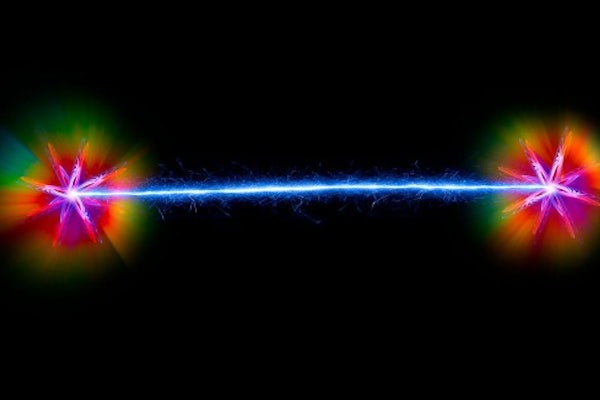Entangled photons to take pictures in the dark
A $1.5 million DOE grant will help team led by McKelvey Engineering develop quantum-based imaging technology

During photosynthesis, a chemical reaction jumpstarted by sunlight breaks down chemicals into the food plants need to repair themselves and to grow.
But as researchers attempt to better understand photosynthesis, they have hit a roadblock when it comes to being able to see the fundamental structures and processes in a plant.
How can they study photosynthesis at its most basic level if, in order to see, they need to use the same wavelengths of light that would jump-start the photosynthesis process?
Joshua Yuan, the Lucy & Stanley Lopata Professor and chair of the Department of Energy, Environmental & Chemical Engineering in the McKelvey School of Engineering at Washington University in St. Louis, turned to quantum physics.
A $1.5 million grant from the Department of Energy will support Yuan as he leads a team that will leverage the quantum property of entanglement — what Einstein referred to as “spooky action at a distance” — to image photosynthesis in action without disturbing the process.
Washington University in St. Louis is leading the research, which will be a collaborative effort with Marlan Scully at Texas A&M University and Yining Zeng at the National Renewable Energy Lab. Scully is a member of National Academy of Sciences.
Quantum Imaging with Undetected Photons (QIUP) is a cutting-edge, but not an entirely new kind of imaging. It makes use of quantum entanglement, a property of quantum physics whereby two particles can be related in a way that measuring one of them allows you to know about the properties of the other — no matter how far from each other they are.
To make use of this strange property, Yuan and his team will entangle photons, or discrete particles of light. They will entangle two beams of photons at two different wavelengths. One with a wavelength in the infrared, another with a wavelength near the visible spectrum — light that a CCD (charge-coupled device) camera can see.
The wavelength of infrared light is too long for plants to use for photosynthesis.
“Basically to the plants, infrared light is dark,” Yuan said.
Similar to traditional imaging systems, QIUP will shine a light at a plant to map its structure. Meanwhile, the second beam of light — which remains “connected” to the first via entanglement — will be affected in ways that directly correlate to the way the infrared light interacts with a specimen.
That near visible light is both a messenger and a translator: it relays information about what the infrared light “sees,” then translates that information into something the researchers can see: an image.
Not only will QIUP let researchers snap a quick image of a sample, they’ll also get more data. Longer wavelengths of light will penetrate deeper into the plant than visible light would. And because of their low energy, the light can be aimed at plant material for a longer time without damaging the plant’s tissue.
In its current state, this kind of imaging tends to yield poor resolution, Yuan said, but his team plans to change that by incorporating artificial intelligence to sharpen the images.




